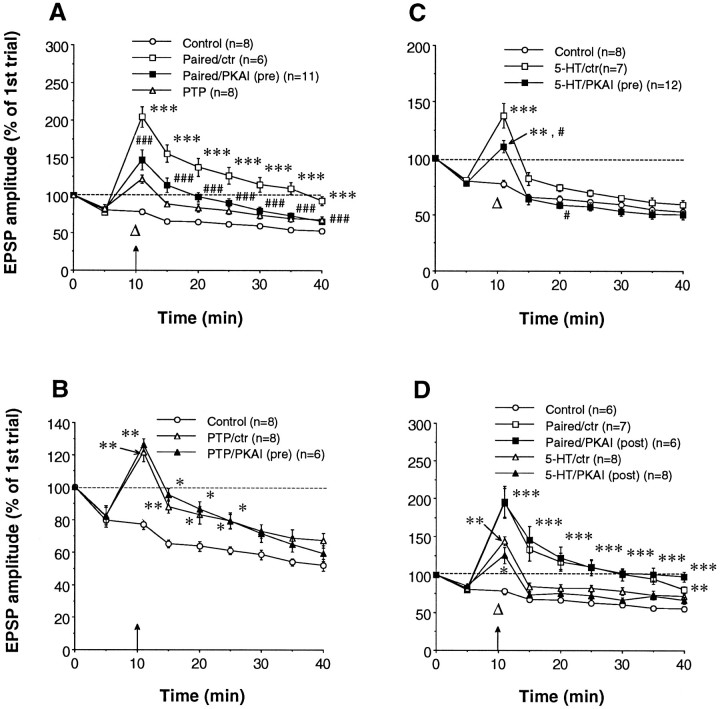Fig. 3.
Presynaptic but not postsynaptic injection of a protein kinase A inhibitor (PKAI6–22) reduces pairing-specific facilitation. A, Presynaptic PKAI6–22 [PKAI(pre)] significantly reduced the facilitation induced by paired training indicated by anarrow (tetanus) and a large open triangle(5-HT). For both control and paired/control groups, sensory neurons received injection of vehicle solution. PTP by tetanus alone is plotted here for comparison (same data plotted as PTP/ctr in B).B, Presynaptic PKAI6–22 had no effect on PTP. The control group is replotted for comparison. C, Presynaptic PKAI6–22 reduced 5-HT-induced facilitation; #p < 0.05 versus 5-HT. The average amplitudes of EPSPs on trial one, 30 min after impalement, in A–Cwere 14.6 ± 2.6 mV (control), 15.8 ± 4.9 mV (paired/control), 24.0 ± 3.3 mV [paired/PKAI(pre)], 12.3 ± 2.7 mV (PTP/control), 18.2 ± 5.2 mV [PTP/PKAI(pre)], 20.4 ± 2.8 mV (5-HT/control), and 19.9 ± 6.9 mV [5-HT/PKAI(pre)], not significantly different [F(6,51) = 2.15; p = 0.0638]. D, Postsynaptic injection of PKAI6–22 [PKAI(post)] did not significantly affect pairing- or 5-HT-induced facilitation. For control, paired/control, and 5-HT/control groups, the motor neurons were injected with vehicle solution. EPSPs 30 min after impalement had amplitudes of 15.4 ± 2.5 mV (control), 12.8 ± 1.3 mV (paired/control), 19.2 ± 4.6 mV [paired/PKAI(post)], 21.4 ± 4.7 mV (5-HT/control) and 17.4 ± 3.9 mV [5-HT/PKAI(post)], not significantly different [F(4,32) = 0.83; p = 0.5146].

